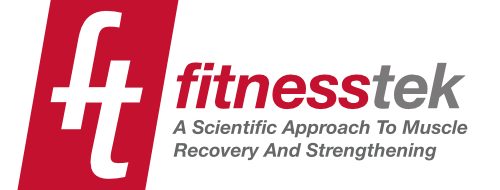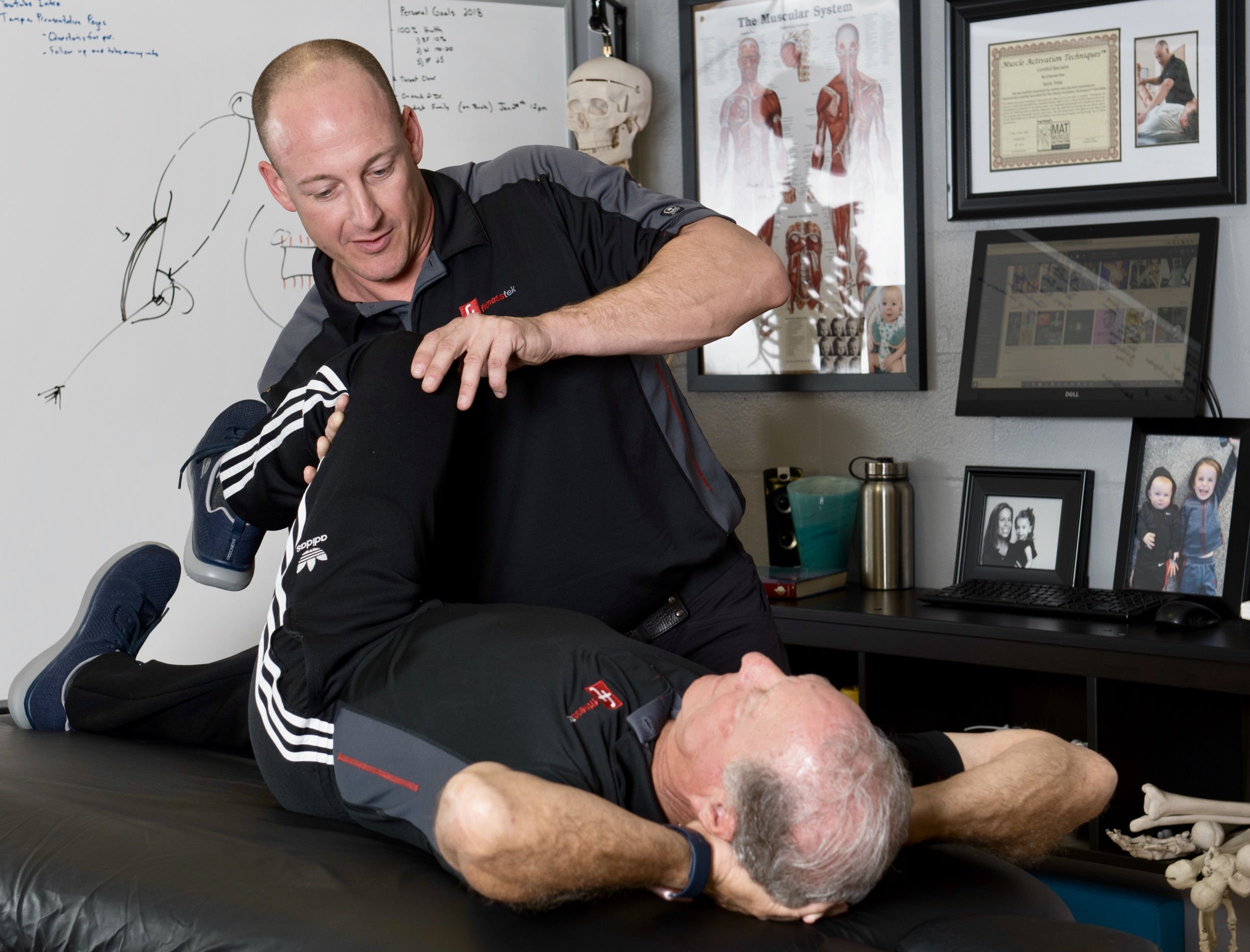Personal Training for the Senior Population
Senior Fitness: A safe and effective start to a workout program for seniors is key in the long-term success of that individual.
First, let's start by defining what a senior is. While most would consider a senior to be over a certain age, we want to take a much more general approach to the category of senior. We classify a senior as anyone that has lost the function and mobility of multiple joints and experiences some age-related pain on a daily bases. This could literally apply to anyone over 40! While age is an easy metric to clump people into, it seriously lacks any information regarding their bodies condition.
Another amazing Fitness-Client getting warmed up with MAT
Now that we have a picture of those of you that fit into this category, let's continue.
As we age mechanically, we will say, separate from our chronological years, certain structural changes start to take place inside of our bodies. These changes happen to a large populous and are the direct result of living in a gravity-based environment where our bodies are under constant mechanical stress of opposing gravity to stay upright.
There are three main areas in the body that are most likely to change with the passing of time due to the above; the facet joints of your spine, the glenohumeral joint and the 52 articulating surfaces in each foot. Each of these will be featured in their own post. Today's post will be on the spine, so please stay tuned for the next two!
Let's Get Started!
Let's talk about the changes in your spine. These conditions are often umbrella-ed under the name Spondylosis. Decreased disk height is the most prevalent effect of age on our spine. This happens when the spinal erector muscles lose strength and density and lose their ability to create a de-compressive force on the spine (like a hydraulic cylinder losing its hydraulic fluid). This loss of density and strength then allows the forces of gravity to go unchecked when we flex the spine forward, causing the disks to approximate closer to each other, over time decreasing the disk height. This disk height will decrease to a degree the amount of spinal flexion the person can achieve. So when exercising, this is something to be cautious of but not avoided.
With this decrease in disk height, you will typically get a translation, or a slipping of a disk though incorrectly named, of one of the vertebrae. This is referred to as Spondylolisthesis. This translation of the actual vertebrae is again caused by the decrease in stability being provided by the spinal erectors and the abdominal muscles. If these changes have begun to take place or there is evidence via an MRI that this has happened, the strengthening of the spinal extensors and flexors is of great importance. However, repetitive movements into these two positions as is traditionally done when trying to strengthen these muscles will lead to an acceleration of the degenerative condition.
Spondylolysis often occurs as a result of the above. This is a fracturing or separation of the pars interarticularis (a posterior boney arch in the back of the spine between the facet joints). As these conditions worsen, and the contractile tissue surrounding and connecting to the vertebral bodies gets weaker from lack of use, your body will begin to absorb calcium from your bones in those areas. This is a mechanism the body had developed to stay as efficient as possible. Where the body does not perceive it needs stability via structure, it reabsorbs in the spine, called osteopenia and osteoporosis depending on the severity of the bone thinning.
Once the bone density has started to change it is paramount that one understands exercise selection. By improperly loading a spine where degenerative spine disease is present you could easily cause a fracturing or crushing of one or more features of a vertebral body/bodies.
Personal trainers and therapists need to understand these changes as they work with populations in which these structural changes are likely to be present. We have seen a number of this conditions improve with Muscle Activation Techniques, isometric strength training, and consistency.
Interested in learning more about how we can help individuals with this condition and others similar to it?? Join us Tuesday 1st @ 12:30 pm on Facebook Live! Bring all and any question you might have as we love engaging with our followers.
Yours in Health
Kevin Votta

